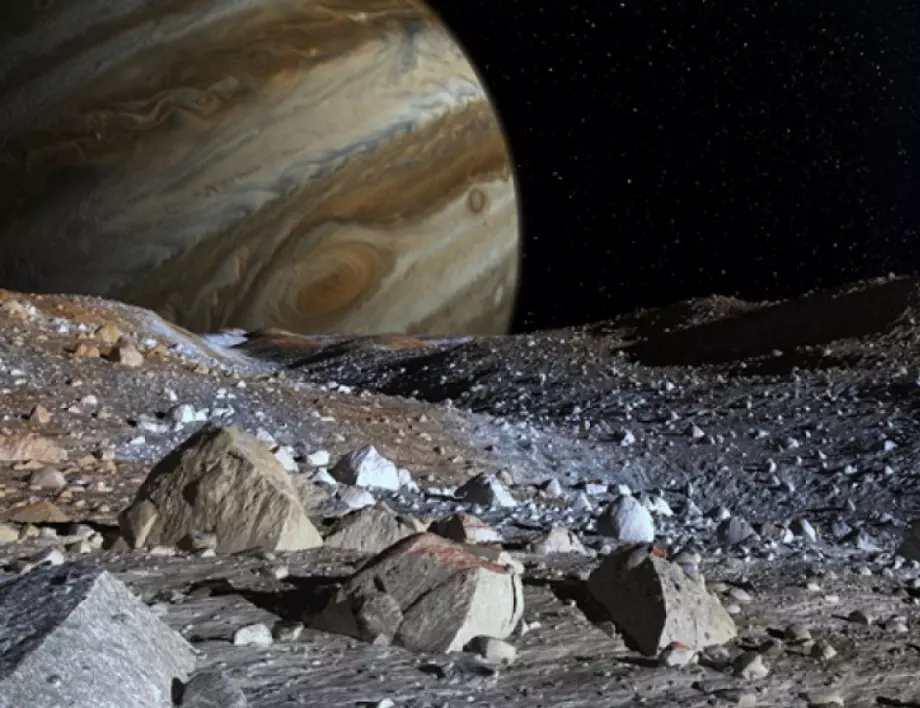Jupiter’s moon Europa is perhaps the most interesting celestial body in the Solar System for astrobiologists. Europa is slightly smaller than our Moon, but unlike it, it has a surface of ice, under which lies an ocean of liquid water about a hundred kilometers deep. The existence of an ocean beneath Europa’s ice sheet can be considered fairly reliably confirmed. The surface is almost devoid of meteorite craters, but it is abundant with cracks, faults, and patches of “chaotic landscape” consisting of fractured, mixed, and frozen ice blocks. Europa’s interior receives powerful tidal heating (like that of neighboring moon Io, though to a lesser extent), which means that volcanoes must erupt on the ocean floor, supplying the ocean with nutrients and energy sources – the necessary conditions for habitability . On the surface of Europa, cold reigns from minus 160 to minus 220 degrees, which is why the thickness of the ice cover is at least several kilometers. Exploring the last ocean will be a very difficult task, and as a first step, scientists will send the Europa Clipper probe into the Jupiter system, which will study Europa and other moons of the gas giant through multiple close flybys. One of the mission’s goals will be to probe Europa’s icy shell using radar. The possibilities of this method depend significantly on the composition of the ice. An impurity of salt will make it difficult for radio waves to penetrate, and if the shell is not very thick and consists of pure ice, the apparatus may be able to shine through it. University of Texas scientists led by Natalie Wolfenbarger suggest that the mantle may contain less salt than expected, and the reason for this is underwater snow, which in Europa’s ocean can move from the bottom up.
On Earth, the ice sheet over the seas grows mainly due to the freezing of the water below, at the ice-water interface. In the Antarctic seas, another mechanism that increases the thickness of the ice has been observed – “snow” of supercooled water that accumulates under the ice. What phenomena could be the cause of such an underwater “snowfall”? The freezing point of water decreases under pressure – by about a degree for every 130 atmospheres. In the Earth’s oceans, this corresponds to an increase in depth of 1,300 meters, and under the ice of Europe – to about 10 kilometers. At the bottom of the Mariana Trench and the Europa ocean, the pressure is almost the same – the depth of the former is ten times less, but the Earth’s gravity is seven times greater than that of Europa. Therefore, the salt water at the very bottom freezes at a temperature of almost ten degrees below zero. In addition, the water is subjected to adiabatic heating and cooling – temperature change during pressure jumps and lack of heat exchange with the environment. Due to the smaller compressibility, its temperature does not change as much as that of air in pumps and compressors, but with large changes in pressure this process becomes noticeable: the coefficient is about one degree per 400 atmospheres (4 kilometers on Earth, 30 kilometers on Europe). Large volumes of water rising or sinking fail to mix with the surrounding water and change its temperature, and water rising from great depth can become supercooled for two reasons: due to adiabatic cooling during decompression; and the outlet temperature if it was below the freezing point of the surface.
Some of the supercooled water freezes, forming very pure acicular ice. This ice floats up and joins the ice sheet at the surface. Scientists have found that the ice crust formed during a uniform freeze, for example due to the gradual cooling of the moon’s interior, will consist mainly of frozen ice. If the ice sheet is subject to thinning, such as by tectonics, volcanic eruptions, or uneven solar heating, new ice will form in the thinned area due to “inverted snowfall.” In Europe, the ice sheet is very dynamic.
Among other things, it has completely overturned several times, sliding along the ocean, and the equatorial regions with a little more solar heating and thin ice ended up near the poles. Therefore, “underwater snowfall” can contribute significantly to the formation of new ice. Thus, part of Europa’s ice sheet may contain many times less salt than previously thought. This complicates the scientists’ task: on the one hand, pure ice is easier to “enlighten” with radar at a greater depth, and on the other hand, the salt content on Europa’s surface is high. It may simply be a consequence of sublimation of ice from the surface, or it may reflect the composition of ice formed by the direct freezing of water that rose to the surface in crevasses and chaotic landscapes. Europa’s ice sheet is likely to be very patchy – some thick, some thin, some salty and some clean – and may require more powerful and flexible radars to study it in detail. On the other hand, it makes the work of future astrobiologists easier: turbulent processes in the ice crust may transport freshly frozen water from the ocean to the surface itself, where its samples will be much easier to study.
Photo: NASA/JPL-Caltech









